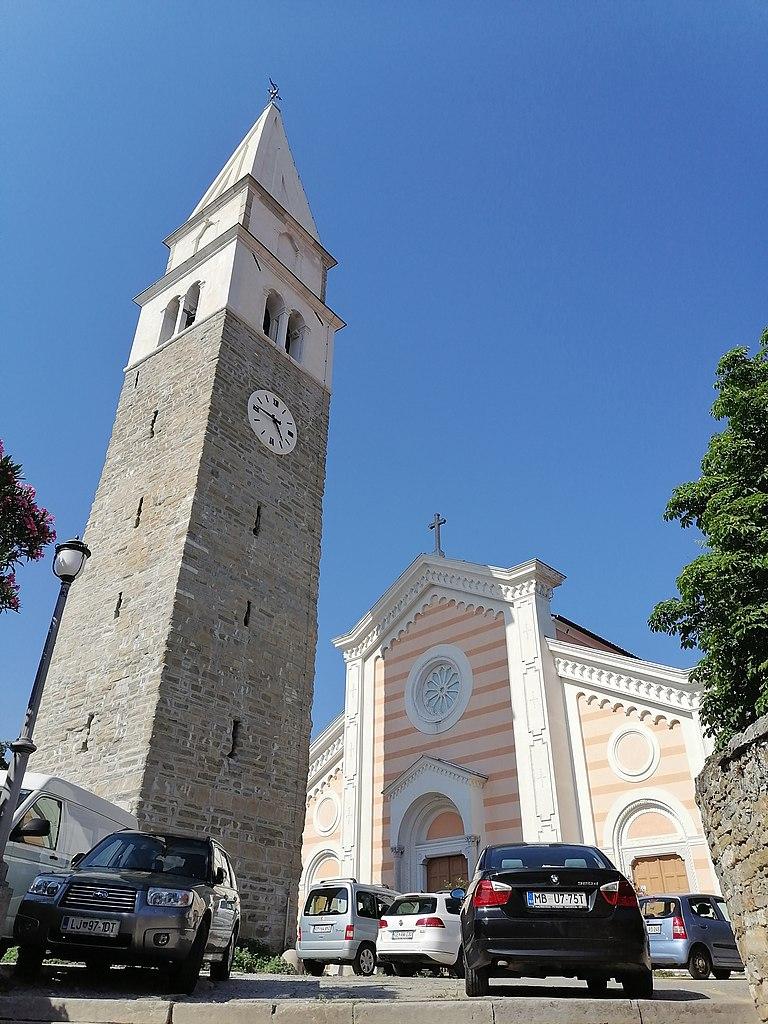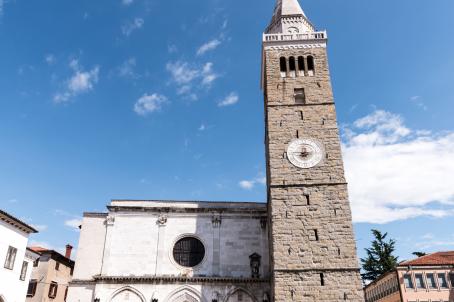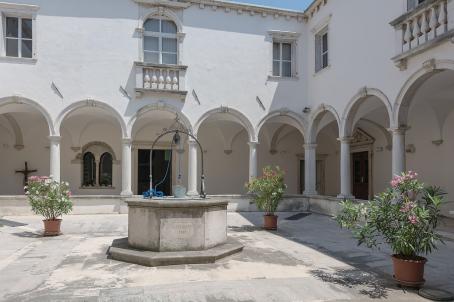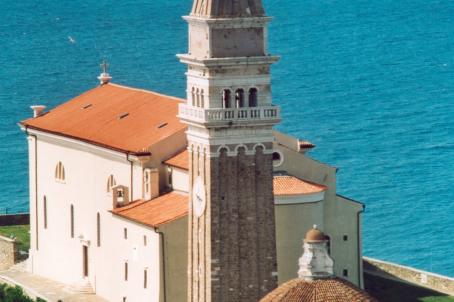Church of St. Mavra
The parish church of St. Mavra dates back to the 15th century. On the site of the present parish church there was a church whose construction is mentioned in 1356. The present church, in the pseudo-Romanesque style with elements of the Renaissance, began to be built in 1547 after the demolition of the original Romanesque church. The works were directed by the architect Mazzafuoco of Venice and Francesco of Bologna from Koper. The new church was consecrated in 1553 and in 1585 a separate bell tower was built, which can still be seen today next to the church.






